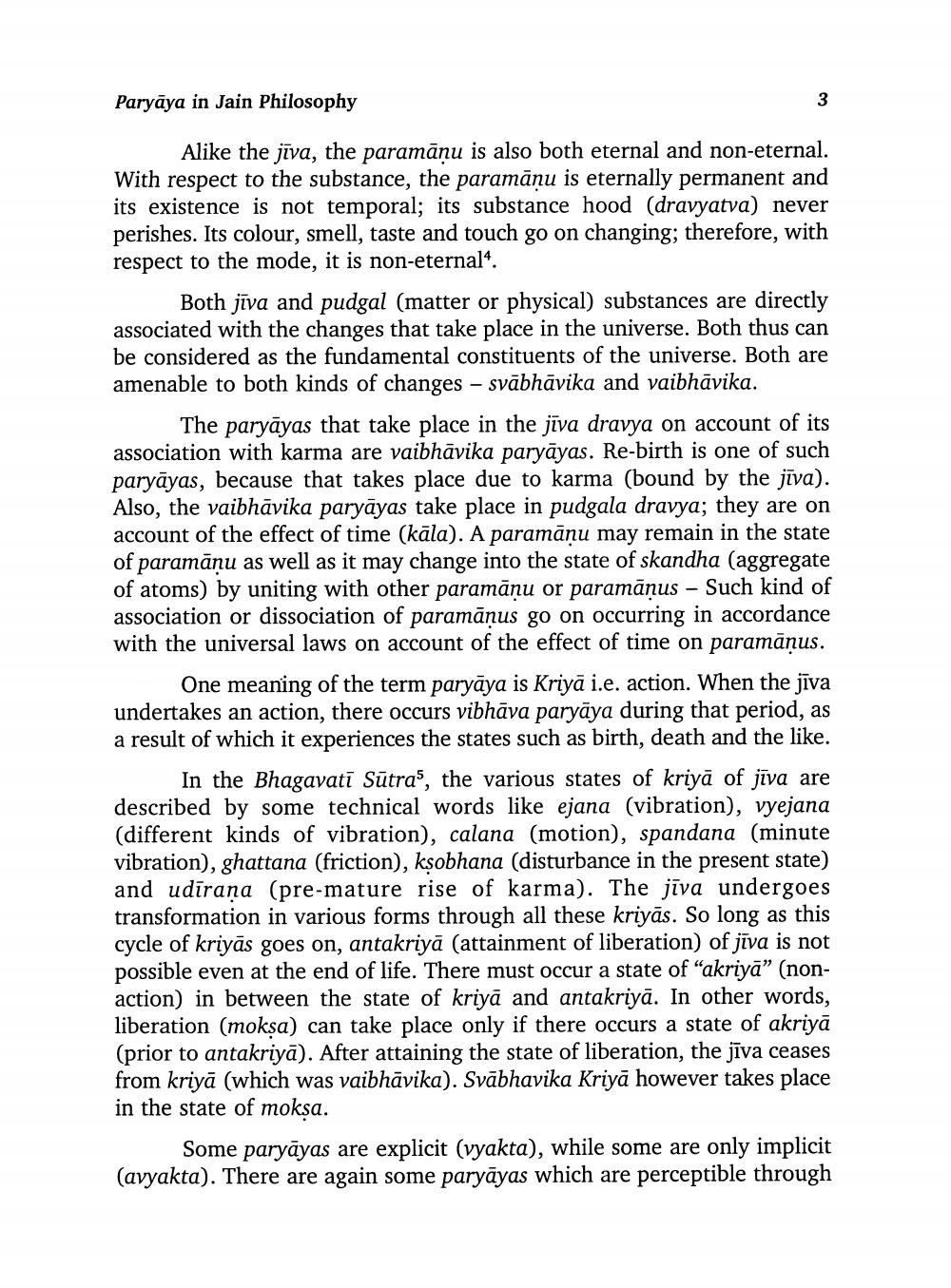________________ Paryaya in Jain Philosophy Alike the jiva, the paramanu is also both eternal and non-eternal. With respect to the substance, the paramanu is eternally permanent and its existence is not temporal; its substance hood (dravyatva) never perishes. Its colour, smell, taste and touch go on changing; therefore, with respect to the mode, it is non-eternal4. Both jiva and pudgal (matter or physical) substances are directly associated with the changes that take place in the universe. Both thus can be considered as the fundamental constituents of the universe. Both are amenable to both kinds of changes - svabhavika and vaibhavika. The paryayas that take place in the jiva dravya on account of its association with karma are vaibhavika paryayas. Re-birth is one of such paryayas, because that takes place due to karma (bound by the jiva). Also, the vaibhavika paryayas take place in pudgala dravya; they are on account of the effect of time (kala). A paramanu may remain in the state of paramanu as well as it may change into the state of skandha (aggregate of atoms) by uniting with other paramanu or paramanus - Such kind of association or dissociation of paramanus go on occurring in accordance with the universal laws on account of the effect of time on paramanus. One meaning of the term paryaya is Kriya i.e. action. When the jiva undertakes an action, there occurs vibhava paryaya during that period, as a result of which it experiences the states such as birth, death and the like. In the Bhagavati Sutra', the various states of kriya of jiva are described by some technical words like ejana (vibration), vyejana (different kinds of vibration), calana (motion), spandana (minute vibration), ghattana (friction), ksobhana (disturbance in the present state) and udirana (pre-mature rise of karma). The jiva undergoes transformation in various forms through all these kriyas. So long as this cycle of kriyas goes on, antakriya (attainment of liberation) of jiva is not possible even at the end of life. There must occur a state of "akriya" (nonaction) in between the state of kriya and antakriya. In other words, liberation (moksa) can take place only if there occurs a state of akriya (prior to antakriya). After attaining the state of liberation, the jiva ceases from kriya (which was vaibhavika). Svabhavika Kriya however takes place in the state of moksa. Some paryayas are explicit (vyakta), while some are only implicit (avyakta). There are again some paryayas which are perceptible through




